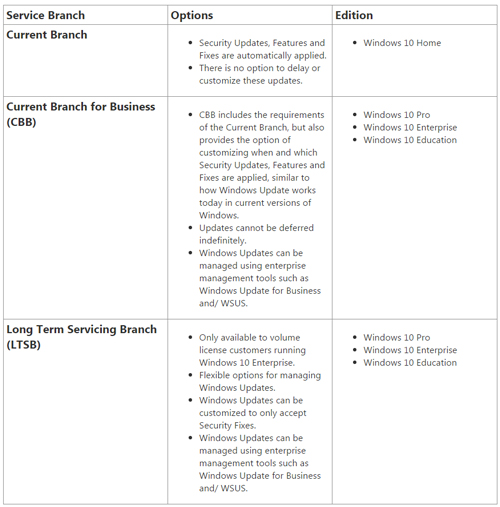News
Windows 10 Update Model May Put Orgs Under Deadline
- By Kurt Mackie
- June 16, 2015
Microsoft's proposed update model for Windows 10 could mean organizations must install OS updates within a certain period of time, or risk not getting future security updates.
According to a briefing for partners called "Staying Current with Windows," presented by Microsoft senior product marketing manager Helen Harmetz, organizations on the so-called "current branch for business" (CBB) update model will have "eight months" to apply Windows 10 updates. Should that period lapse without the update being applied, those organizations will not get future security updates for the OS.
Microsoft first talked about its servicing models for Windows 10 back in January. Last month, it described those models further in some Ignite sessions. However, the eight-month deadline -- which could be important for organizations with complex software environments to maintain -- wasn't mentioned on those occasions.
Organizations wanting the more traditional update model for Windows with greater control over when OS updates can be deployed can opt for the long-term servicing branch update model for Windows 10. However, the long-term servicing branch option only will be available to organizations that use the Enterprise edition of Windows 10.
The third update model for Windows 10 is called the "current branch." It's the Windows Update model that most consumers follow. Consumers tend to just accept what comes down the pipe from Microsoft, but they do have deferral options at present with Windows 7 and Windows 8. However, that situation will change with Windows 10. Current branch Windows 10 users won't have much ability to defer updates. Windows 10 Home edition users can at best defer updates for a "couple of hours," while Windows 10 Pro edition users will have the ability to defer updates "for up to 24 hours," according to a Microsoft MVP, answering a question in this Microsoft community forum page.
So far, Microsoft's servicing-branch models for Windows 10 look something like this table, as produced by Microsoft MVP Andre Da Costa in his Windows 10 FAQ:
 [Click on image for larger view.] Microsoft's three service-branch plans for Windows 10. (Source: a Microsoft community page FAQ.)
[Click on image for larger view.] Microsoft's three service-branch plans for Windows 10. (Source: a Microsoft community page FAQ.)
Microsoft has used the threat of cutting off security updates before to herd its customers. For instance, it set a deadline for people to move to a Windows 8.1 Update from Windows 8.1, and it set a separate deadline for organizations to make that same move. This Windows 8.1 Update established a new OS baseline, allowing it to continue to get security updates. Those who didn't apply the Update had unpatched and potentially insecure systems.
Similarly, Microsoft has set a deadline of Jan. 12, 2016 for organizations to move to the most current Internet Explorer version per supported Windows. If they fail to make this move, then they will not continue to get future security updates for their browsers.
Even though Windows 10 is on its way for scheduled release on July 29, lots of details are still unknown about it. Windows 10 will be a free upgrade for consumers and some organizations. However, it's rumored that those accepting the free upgrade offer will have to also accept following the current-branch model (namely, Windows Update) in which the upgrades can't really be deferred.
About the Author
Kurt Mackie is senior news producer for 1105 Media's Converge360 group.